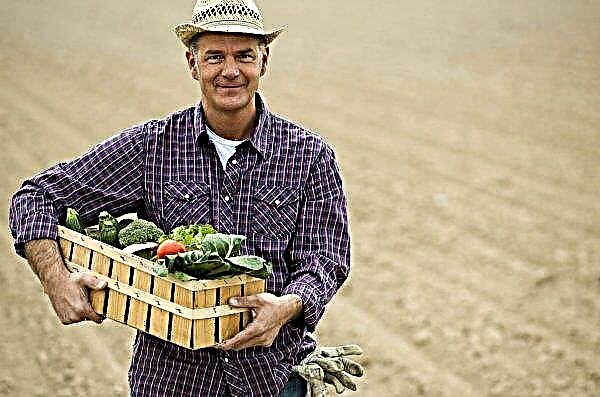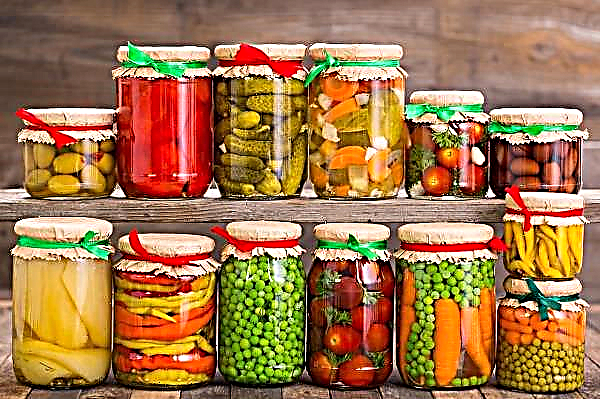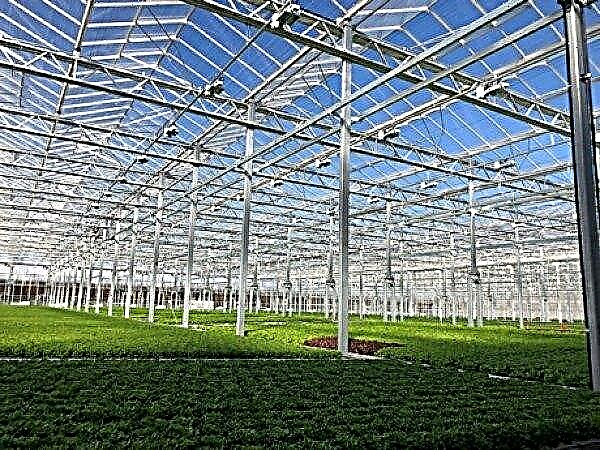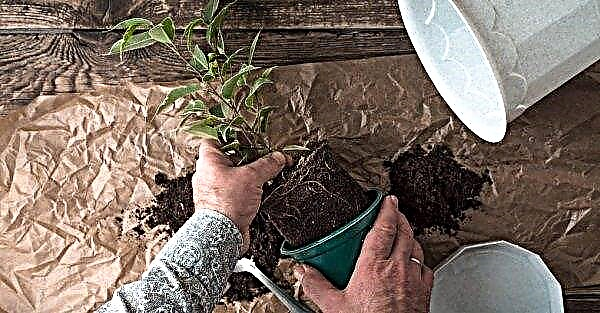One of the most unpleasant problems that the owner of a dacha or household plot may encounter is an uneven ground surface, the presence of a slope. You can, of course, turn to specialists who will bring in heavy equipment and level the ideal site, but such pleasure is expensive and, moreover, often leads to serious losses of the fertile soil layer. A more competent way out of the situation is to create terraces, especially since there are many options for their spectacular design in landscape design, which will be discussed later.
Advantages and disadvantages of terrace design
Like any constructive solution, the arrangement of uneven land using a terraced landscape has its pros and cons. The advantages of the project include a wide scope for creativity. Due to the height differences, you can create a sense of three-dimensional space, where it is very convenient to form the most diverse landscape compositions in style, while they are naturally zoned and separated from each other, not perceived as a lack of taste.

Properly made supports provide additional protection from the wind and allow you to create closed areas for recreation, where it will always be cozy and comfortable to be. To save free space, such a support can be used as the back wall of a stationary bench, thus solving two problems at once: correcting the unevenness of the site and a corner fenced from drafts, for which there is always not enough space in small dachas.
Important! Japanese-style rock gardens and rock gardens are the easiest to create on terraced areas. It is enough to correctly use the existing slope and place multilevel plant compositions on it.
Another original option for using the transitions between platforms located at different heights is the creation of a children's slide for skiing, an extension to the support of a fabulous tower or the installation of sports simulators that are small in height. If there is more free space, the terraces can be used to equip a cascading waterfall, and in its lower zone organize your own pool or artificial pond.

On a flat site, such a composition is very difficult to perform, it will require a lot of work and the purchase of expensive pumps, and if there are already initial irregularities and differences, such solutions literally fit into the existing relief.
Another advantage of terraces is visibility. In this case, magnificent views open up from different areas of the site, which can also be perfectly played by a talented specialist in landscape design. Low-growing and bright flowers or ground cover plants in the form of patterned flower beds are located on the slope in any of the most bizarre combinations, shading or flowing smoothly at the foot of ornamental trees or shrubs, without losing their shade.
Did you know? In the heart of Jerusalem, on the roof of the prestigious Mamilla Hotel, is one of the most beautiful terraces in the world. The author of the project is the famous Italian architect Piero Lissoni.
Due to the different levels on the terraces, it is possible to plant a variety of crops, and this thoroughly also favorably distinguishes uneven terrain from the standard "lawn": some plants are contraindicated in a lowland, others, on the contrary, cannot develop normally in an open and elevated area where the wind dries the earth and destroys root system. Terraces make it possible to perfectly combine both variants of decorative and garden crops, choosing for each place that is best suited to it.
Finally, due to the zoning of the site with the help of terraces, it is possible to significantly reduce the cost of the construction of capital buildings - houses, a barn, a summer kitchen, a gazebo for barbecue, etc. Instead of several floors, for example, there is an option to equip living quarters located at different levels, separated from each other by stairs, which, in turn, is enough to install on an existing slope in the relief.
If we talk about the shortcomings of the terrace method of planning the site, then first of all it should be noted the lack of the ability to equip a garden convenient for processing in such a zone, consisting of the usual smooth and wide beds planted, for example, with potatoes or strawberries.
 With a competent layout, the roof of one building turns into an open veranda, a support between the two levels of terraces acts as a wall, and sewage waste is removed to the cesspool by gravity, which allows a good saving on construction materials and labor.
With a competent layout, the roof of one building turns into an open veranda, a support between the two levels of terraces acts as a wall, and sewage waste is removed to the cesspool by gravity, which allows a good saving on construction materials and labor.
The organization of irrigation also causes certain difficulties, especially if it is supposed to use a drip irrigation system: instead of direct tapes laid at equal distances from each other, terraces suggest the creation of much more bulky and complex structures.
Another inevitable disadvantage of uneven terrain is that the soil in such areas is usually clayey and unsuitable for agriculture, since the fertile layer is washed out along with rainwater for a long time. However, it is precisely due to the organization of terraces that this problem can be solved once and for all, while when planting plants on an existing slope, even specially imported chernozem will soon turn into solid clay again.
Further, the terraces give great scope for creativity, but at the same time impose additional obligations and restrictions on the land owner, mainly related to the need to build supports to strengthen sites and prevent landslides, a large number of preparatory earthworks, which mainly have to be done manually, and complex design, not always accessible to humans, not a specialist in landscape design.
Varieties of terrace design
Since the terrace method of solving the problem of irregularities of personal plots is used very often and widely in landscape design, there are several options for implementing such a project. The optimal choice of one or another of them depends on many factors - the size of the land allotment, the main purpose of its use (cottage, residential building, park area, resting place, garden, etc.), as well as taste preferences and financial capabilities of the owner. It is possible to combine several types of terracing in one project at once.

Stepped structures
The most common type of terraces are stepped or, as they are also called, bench-shaped. If there is a large slope, from 12º and above, this design option is used. The width of each row, depending on the layout of the site, can vary from 80 cm to 6 m, but the range of 2–4 m is considered optimal. The difference between tiers is on average 70 cm, although in rare cases it can be increased to 2 m.
Important! The steeper the slope, the more significant the difference in height between the tiers should be, and, therefore, it is more difficult to realize the task. In such cases, work can be facilitated by reducing the width of horizontal platforms.
You can grow in such areas as garden crops, and trees or ornamental plants. In addition, vineyards are sometimes placed on stepped terraces, which helps to protect the soil from leaching.
The tiers are strengthened when using the bench-type variety of the project with the help of building materials (concrete blind area, masonry or brickwork, etc.), as well as in a natural way - by forming an earthen rampart and planting lawn grass or other low-growing plants with a well-branched surface root system on it.

Trench Terraces
If the natural slope on the site is negligible, terracing can be done by creating trenches or ridges. In the first case, plants are planted in longitudinal pits, previously filled with fertile soil, removed from the upper layer of row spacing or specially brought to the site for these purposes. Bad soil, extracted during the excavation of trenches, is used to create an earthen rampart along their perimeter.
If the original soil quality is low and the nutrient layer is thin, the use of trenches can partially correct the situation. The height difference between the trenches and the shafts surrounding them can be different, however, it is also possible to create multi-tier structures with this method, the total height difference at which sometimes reaches 2-3 m.

Trench terraces are good for growing crops that prefer to grow in lowlands. They are also suitable for areas with low groundwater or elevated locations - in cases where it is necessary to hold water directly on the bed. In practice, this method is used in the cultivation of tea, rice, citrus fruits, as well as ornamental plants, the natural distribution area of which is the forest.
Comb
A ridge terrace is the reverse of the trench. In this case, the fertile soil layer is formed not in the pit, but on the “ridge” piled near it - an earthen rampart with a height of 25 to 40 cm. Such rows are arranged across the slope with a row spacing of 18-50 cm. In contrast to trenches, plants are planted on the rampart that do not tolerate waterlogging and waterlogging of the soil, thus, the method is used to raise beds.

It is on the ridges that grapes grow very well, as well as many fruit trees, but for lowlands this method may be the only possible option to grow a crop of potatoes and other traditional types of vegetables.
Ditch terraces
Ditch terraces are a term that is found in some sources and, in fact, is an alternative to the name of the trench method of arranging an uneven plot of land.

How to make a terrace landscape design
Before embarking on a project, you need to learn a few basic rules for creating terraces:
- Work is best done in early spring or autumn. The earth at this time is quite wet and therefore it is much easier to work with it. In addition, an integral part of the project is to strengthen the slopes, and if this problem is solved by planting on the slopes of embankments soil cover or other plants suitable for such purposes, in a dry summer they have a much less chance of climbing.
- Wide terraces are acceptable with an initially small, gentle and even slope. If the relief is complex and contains many irregularities and elevations, it is better to make a larger number of compact, picturesquely scattered sites than to try to bring wide rows to the same level.
- Terracing should not imply a radical change in the initial natural relief, otherwise, the structure with a high probability will soon collapse precisely under the influence of those forces that formed the site in its original form.
- If it is planned to place capital structures on the site, their location and design features must be foreseen in advance in the general project. The same applies to the place of entry and parking of personal vehicles.
- Terraces, oddly enough, line up from top to bottom, and not vice versa. The land removed from the upper tier is transferred to the lower rows and so on.
- When arranging a multi-level site, one must not forget about the storm drain. If you do not provide a system by which excess moisture will leave the upper tiers, after a short time the water will destroy the entire cascade of beds and take away the remains of fertile soil.
- In the lower zone, it is equally important to organize drainage, otherwise the crops growing here will be flooded, and this, in turn, will lead to the development of root rot and other infections.
- When placing tiers, one must take into account the orientation of the slope to the cardinal points and, accordingly, the movement of the sun during the day. The development of crops planted on the beds depends on this, because not only the fact of being in the sun or in the shade, but also the time of day during which full lighting and, conversely, shading, matters, for them.
Important! The best tips for the proper arrangement of terraces are in the relief of the site. The task of a good designer is to recognize them and use them correctly when designing zones, platforms and decorative compositions.
It is easiest to evaluate the proposed (or self-made) project for the placement of terraces on the site according to one main criterion: the more initial irregularities are taken into account and involved in the plan almost unchanged, the better the work is done, the easier it will be to implement the plan and the more reliable the finished system will be.

Soil preparation
When using terracing in large-scale projects, four main methods of forming flat areas are used:
- plantingwhen, with the help of a special plow, starting from the top point of the plot, the furrows are first plowed with a depth of 20 cm, then, in the next row, 40 cm and so on in increment, while excess land is moved down from the upper tiers;
- bulldozerin which the soil is cut off and moved to the right place using heavy equipment (this method, with external simplicity, has several disadvantages, since it destroys the soil structure, does not ensure its full loosening, and subsequently requires a whole range of work to cultivate the fertile layer);
- hobbyinvolving the use of a conventional tractor plow;
- gradualwhen the alignment of the site is carried out for several years and each time is fixed by planting "row crops" plants - grasses or crops.
The latter option can be used when arranging terraces with your own hands within a small personal area, but if you want to create the desired relief immediately, you need to be prepared for the inevitable fulfillment of the main task - removal and simultaneous separation of the upper fertile and lower clay soil layers into two large parts, followed by using the first for the formation of areas on which plants will be planted, and the second for earthen embankments between tiers.
It is possible that the available chernozem to solve this problem will not be enough. In this case, the easiest, but not the cheapest way out is to purchase the necessary amount of fertile land. As an alternative, you can add compost, manure, rotted mulch and other organic matter to the beds.
Experts note that with a competent combination of this method using high-quality soil from the upper tiers, terracing can be performed without additional purchase of black soil, and this method is the most modern and environmentally friendly, since it meets the latest construction trends - the desire for the so-called “zero balance”.

Terrace making
In a standard form, each terrace consists of four parts - a flat land, external and internal slope, as well as an untouched zone that separates one area from another (the so-called berm).
Did you know? One example of the use of terracing in antiquity is one of the seven wonders of the world - the hanging gardens of Babylon.We are talking about an engineering structure in the form of a cascade of multi-tiered platforms where various plant species were planted.
Stage production of tiers is carried out according to the following scheme:
- Creation of the project and visual verification of it with the terrain.
- Marking future sites with pegs in the direction from top to bottom. Initially, the designation is performed vertically, and then horizontal rows are lined up opposite each of the first row of pegs.
- Digging and bedding sites. Specialists advise to form beds with a “reverse” slope of 8–10º, that is, to shift the plane of each terrace towards the main slope of the relief, thus raising the edge of the slope slightly up. This will provide additional stability to the structure and will not allow the earth to crumble or drain after the first rain.
- Formation in the walls of the drainage system - aboveground or underground. As a simpler option, filter openings for draining water can also be provided in the slopes.
- Strengthening the slope.
 The stability and durability of the entire structure depend on the correctness of the last stage, so it’s worthwhile to dwell on it in more detail.
The stability and durability of the entire structure depend on the correctness of the last stage, so it’s worthwhile to dwell on it in more detail.
Slope reinforcement
In order for the bulk shaft enclosing the tiered areas not to slip, it is usually reinforced with a support wall. If the height between the terraces exceeds 30 cm, a reliable foundation is necessary for such support, in other cases it is enough to simply dig the structure into the ground and fix it with a mixture of sand and gravel. Increased stability of the supporting walls is made by making them not rectangular, but in the form of a trapezoid, tapering in the upper part, and the edge of such a plane should at least rise slightly above the level of the bed, this will reliably hold the soil inside. A prerequisite for the durability of the support is also the laying of drainage between the wall and the earthen shaft.
As a material for support can serve:
- decorative rock;
- fittings;
- brick;
- concrete structures;
- facing plates;
- boards or logs;
- interwoven branches of fruit trees or vines;
- car tires.
 The device retaining wall of brick: 1 - crushed stone; 2 - masonry; 3 - drainage hole in the masonry; 4 - concrete foundation.
The device retaining wall of brick: 1 - crushed stone; 2 - masonry; 3 - drainage hole in the masonry; 4 - concrete foundation.
Alternatively, instead of the supporting wall, a wooden multi-tier structure can be made on which spectacular ampelous plants should be placed, and steps should be provided along the edges for convenient movement between terraces.
A special way to strengthen the slopes is gabion (literally translated from French, this term means “a large basket with stones”) or a pergon (“corridor from the grate”). With regard to terracing, both options involve the manufacture of a cage from wire or reinforcement, filling it with stones, gravel or saw cut trees and installing a heavy, but at the same time very effective construction between the rows between the rows to divide the tiers and strengthen the slope.
Gabions have a lot of advantages: they are strong, reliable, durable, moisture resistant, pass air well, easily change shape, adapting to uneven terrain, while being environmentally friendly, cheap and easy to manufacture.
Did you know? Gabions were invented in the 16th century as an element of a defensive war: with the help of densely stuffed with earth and stones wicker baskets, soldiers were protected from buckshots, and during marches they transported equipment without much effort.
If the inter-tier distance is not high, and the earthen rampart between the terraces is not steep but gentle, it can be strengthened using the root system of plants. But even when using support walls, such a live fence can find a suitable application - lawn grass or other ground covers can be sown directly between stones or other elements of the slope facing, and over time the construction will take on a very picturesque appearance. This option is particularly suitable in cases where the slopes were fixed with geogrids or geotextiles - modern polymer structures filled with soil or sand.
Best of all, meadow plants such as:
- garden saxifrage;
- ivy;
- Shave
- Lubelia
- stonecrops;
- sedums;
- tobacco;
- periwinkle;
- sweet pea;
- Hypericum calyx;
- tenacious creeping;
- motley motley;
- nasturtium;
- rock fern;
- surfinia.
 The main requirements for such crops are unpretentiousness, stunting, resistance to drought and a superficial root system.
The main requirements for such crops are unpretentiousness, stunting, resistance to drought and a superficial root system.
How to design a terrace
When designing terraces, it is very important to try to avoid sharp changes in height: the more smooth the rise, the more reliable and durable the layout. If the given relief does not allow you to stay within a small slope, it is better to make steep slopes short and direct them across the terraces, but at the same time give preference to long paths running along the slope, not crossing the site, but as if enveloping it along a large arc or in the form of a serpentine .
You should also not save on the number of steps when arranging stairs. Care of the beds involves constant movement around the site with a heavy load or large garden tools, so a gentle and comfortable staircase is an elementary safety requirement. The ideal proportions between the width and height of the steps is, respectively, 35–40 and 10–14 cm (steeper and narrower steps are allowed in the house). The maximum number of steps in the stairs connecting the terraces is 12–15, after which it is necessary to provide a gentle platform.

On the other hand, it is necessary to plan the tiers in such a way that the lifts connecting them contain at least three steps, otherwise the manufacture of complex structures, such as a staircase, simply will not justify itself. In addition to stairs or even instead of them, you can connect tiers with gentle ramps. It is easier to move garden equipment over them, especially wheelbarrows, stepladders or construction stretchers. Building a house on a terraced area is also an art.
Here it is important to take into account, in addition to the usual building codes, such additional points:
- living quarters are not recommended to be placed at the level of the lower tiers, since in this case the building on one side will be very cold due to the cold air masses, which, moving from top to bottom, will collide with an obstacle in the form of a wall;
- when the basement is buried in the ground, the presence of a slope increases the likelihood of rapid wear of the foundation due to the uneven distribution of heat and humidity, and therefore the system of hydro and thermal insulation must be performed especially carefully.
Installation of irrigation systems
Modern drip irrigation systems involve a huge variety of configurations and forms of connecting elements, using them correctly, you can, like a designer, assemble a suitable system for any terrain. It is only important to remember that water should not move by gravity in the presence of a slope, otherwise, one end of the bed will always remain dry, and the other forms a small swamp. There are alternative drip irrigation options specifically designed for use on sloped land.
 Scheme: 1-rain sensor, 2-storage tank, 3-control panel; 4-pipeline; 5-rotor sprinkler; 6-solenoid valve; 7-pipe connection fittings; 8 - fan sprinkler.
Scheme: 1-rain sensor, 2-storage tank, 3-control panel; 4-pipeline; 5-rotor sprinkler; 6-solenoid valve; 7-pipe connection fittings; 8 - fan sprinkler.
For example, a distribution piping system is installed on the site, to which irrigation tapes are connected to directly supply water to the plants. At the same time, water flow regulators are provided at the junction, and at the end of each belt there are special bypass devices. The water outlet is placed vertically and represents the capacity of the variable volume with a calibrated hole at the bottom, thus ensuring a uniform distribution of water throughout the irrigated area, and its amount is adjusted taking into account the natural slope of the relief.
With a competent approach, an uneven plot of land can easily be turned from a serious problem into a real gift of fate. The easiest and most popular way to use the terrain is terracing. With its help, the most unusual design decisions are implemented, including those that cannot be brought to life on a dull and perfectly aligned plain canvas.












